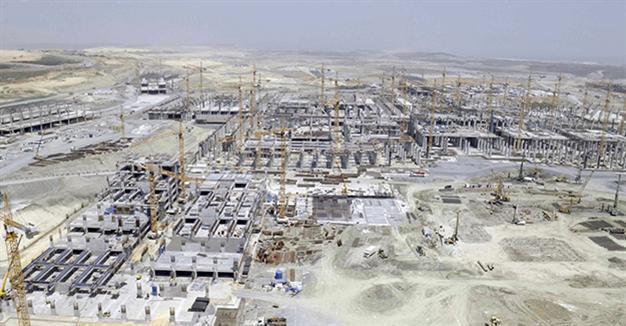Construction of Istanbul’s gigantic airport in fast lane
ISTANBUL

Thirty percent of the first phase of Istanbul’s third airport, one of the largest projects in modern Turkey’s history, has been completed, according to the top executive of the company which is conducting its construction.
Two million euros have already been spent on the first phase of the airport, which is projected to serve 90 million passengers a year initially, İGA CEO Yusuf Akçayoğlu said during an interview with Anadolu Agency.
“So far, we have invested some 2 billion euros of the initial 6 billion euros of the first batch of credit,” he said, noting that the first phase began in May 2015.
The speed of the construction has increased during the summer, Akçayoğlu said, adding that construction would be completed by the February 2018 deadline if the contractors display a 4 to 5 percent improvement each month.
Currently, a sum of 17,500 people are working on the construction site, he said.
Akçayoğlu said the number of employees working on the night shifts would be increased and that the total number of workers would reach 25,000 to 30,000 at its peak.
The construction on a former mine requires a great amount of land filling.
Akçayoğlu said 24 million cubic meters of soil is dug every month, while 16 million cubic meters of soil is being used to fill in holes on the plot.
The executive compared the amount to the Atatürk Dam, the largest in the country, which is 80 million cubic meters in volume.
“This means that we do half of it each month,” he said.
The final target for the airport is 200 million passengers each year, he said, noting that once completed, the airport would offer flights to more than 350 destinations.
The size of the airport is equal to around 11,000 football pitches.
“Istanbul’s new airport is a nominee for the Guinness Records Book with the amount of work equipment and vehicles being used there,” he said, noting that 2,200 trucks, 252 excavators, 60 tower cranes, 57 graders, 124 cylinders, 101 bulldozers and many other vehicles were being actively used at the site.
 Thirty percent of the first phase of Istanbul’s third airport, one of the largest projects in modern Turkey’s history, has been completed, according to the top executive of the company which is conducting its construction.
Thirty percent of the first phase of Istanbul’s third airport, one of the largest projects in modern Turkey’s history, has been completed, according to the top executive of the company which is conducting its construction.